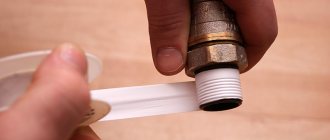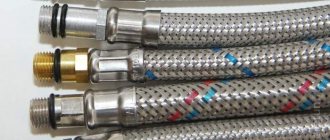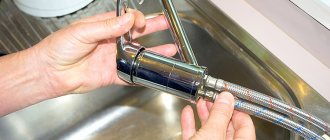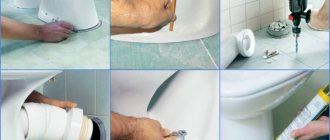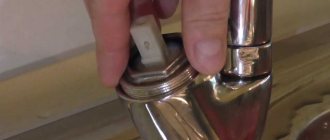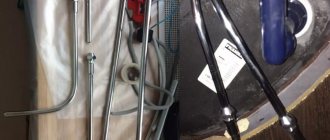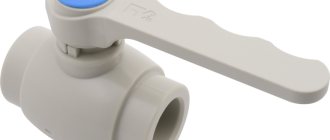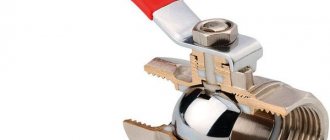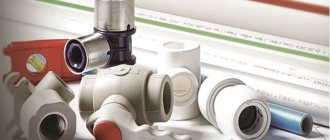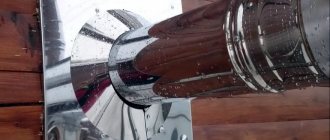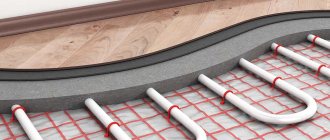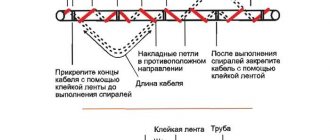How to change a hose on a faucet
How to change a hose on a faucet
One of the thin places where the mixer is connected to the water supply wiring is the hose. After a long period of operation, it often begins to leak, which is due to the peculiarities of its design. The mixer itself works properly. In this case, it is enough to replace the old connection with a new high-quality product. It is important to first choose the right replacement.
Flexible water line
A flexible water line is more preferable for the vast majority of people. It is small in size, easy to use and easy to install.
Flexible hose is an elastic, strong hose. Its length usually ranges from 30 cm to 5 meters. At the ends of the hose there are fasteners with a seal, which is a special rubber ring. Most modern manufacturers of plumbing products use this particular liner option for their equipment. This is justified by a number of undoubted advantages.
Connection to the barrel
connect the garden hose to the barrel yourself by following simple installation instructions:
- It is advisable to install the barrel on a stand so that it is at a distance of at least 10-15 cm from the ground.
- Make several holes in the top of the barrel, this will create constant air circulation.
- In the lower part, drill a hole for the coupling and tap; to securely fasten the coupling, use a special paste or sealing tape.
- Install a faucet with a filter onto the coupling.
- Using a fitting or any other connector, attach the hose to the tap.
After installation, be sure to conduct a test run of water to make sure there are no leaks due to loose connections.
The main advantages of flexible hoses:
- This is their mobility, compared to rigid structures.
- You can also highlight their convenience when installing in hard-to-reach places. In addition, installation of flexible hoses is easy in places with limited space, without compromising its integrity and reliability. Whereas the installation of metal pipes is very complex, inconvenient and time-consuming.
- Almost complete tightness of the structure due to manufacturing from the best quality materials
- Even a beginner who does not have special equipment or special skills can cope with the installation or dismantling of the structure
- Vibration resistance
- If certain rules are observed, flexible water supply has a long service life.
- Low exposure to high temperatures
The flexible type of design is convenient when installing in a large network of pipes, as well as other plumbing fixtures. The same cannot be said about tough types.
Disadvantages of flexible structures.
Despite all the advantages, this type of eyeliner also has its bad sides. They are revealed already during use:
- Excessive twisting, tension and bending can damage the integrity of the braid, which will inevitably lead to a reduction in service life.
- Installation in close proximity to an open flame source is prohibited
- Fasteners gradually corrode under the influence of water and time. Which will eventually lead to the repair of the faucet or other expensive fittings.
- Some types of flexible structures do not respond well to exposure to too high temperatures (water close to boiling)
Flexible hose covered with reinforced braid.
It is a hose, very elastic and covered with braiding made of various materials. Fittings are attached to the ends. A fitting is attached to one end, and a union nut with a certain external thread diameter is attached to the other.
One of the advantages is the low price. That is why this type of flexible water line is very often chosen by buyers. The hose manufacturing technology is not too complicated. But nevertheless, this type of eyeliner has a very complex structure. The base is rubber, rubber or reinforced cross-linked polyethylene. The hose is braided with wire thread.
When braiding it is possible to use a variety of materials:
- Stainless steel is the most popular winding material. It is characterized by the most average parameters. It exhibits its properties well at +95 degrees in liquid 10 atm. pressure. Reliable operation is ensured for 10 years. Ideal for connecting the water supply to the toilet cistern.
- Nylon performs better than stainless steel. Operating temperature up to +110 degrees. The working pressure cannot be more than 20 atm. pressure. Stable work for more than 15 years.
- Aluminum is a less stable material for braid production. The temperature of the liquid must not exceed a certain temperature. This is +80 degrees for stable operation of the braid. Pressure no more than 5 atmospheres. The service life of such a braid is about 5 years. Disadvantages include increased susceptibility to corrosion. Products with aluminum braiding should be used in environments with low humidity.
Irrigation equipment
This type of equipment differs in two parameters: the cross-section and the material used to make the hose. If we talk about the cross-section, the most popular diameter is 13 mm; most watering taps are manufactured for it.
Although for watering large areas, owners prefer a tap for a 3-4 inch hose, which is about 20 mm.
Accordingly, the hoses are taken with a larger diameter.
- As for the material, the range on the market is impressive in its diversity; there really is something for every taste and budget. Plastic products are considered the most affordable. Here both price and weight are the lowest. But such equipment will not last long. The walls will crack at bends and if hard water is used, the inside surface will become overgrown with limescale.
- Rubber products are deservedly considered the patriarchs of country watering. The material is quite durable, elastic and not afraid of creases. In terms of durability, rubber, of course, is superior to plastic, but inferior to nylon and PVC. Expandable irrigation hose.
- Nylon products have long been considered the highest quality and most durable. But they have one serious drawback: this material does not tolerate temperature changes. Hot water is especially dangerous for nylon; at elevated temperatures, the material becomes soft, resulting in a significant reduction in strength.
- The modern hose made of PVC polyvinyl chloride and additionally reinforced with fiberglass is deservedly considered the king of irrigation hoses. He is not afraid of temperature changes, as well as changes in pressure in the system.
Reinforced irrigation hose.
Bellows liner for water.
It consists of flexible bellows tubes with design features.
The advantages include:
- Reliability in operation
- Much longer service life compared to reinforced structures.
- The bellows liner is also very flexible. The design consists of assembled stainless steel rings of different diameters.
This eyeliner comes in two types:
- The first type is folding. It has the ability to stretch in the ranges specified by the manufacturer: from 200 to 355 mm. and from 140 to 250 mm. To avoid reducing service life, care should be taken when stretching.
- The second type is a fixed bellows connection for water supply. Does not stretch and has a certain length. Minimum length 10 cm. Maximum length 80 cm. Manufacturing step 10 cm.
The main negative property of such a liner is the hum that occurs when water flows to many products at once. For example, water is supplied to several plumbing units at once. To avoid this drawback, you should purchase an insulated bellows liner. Or use special anti-vibration types of liners that absorb sound.
What it is?
Hose couplings, called “connectors,” are a simple fitting.
The product is presented in a fairly wide range. The main feature of all options is good waterproofing at high pressure inside the hose. Alloys of various metals or PVC are used as materials for manufacturing parts. The product is selected in accordance with the tasks to be performed. It is clear that plastic connectors are cheaper in price, but they can withstand pressure up to 10 bar.
Plastic connectors are well suited for watering beds, as a sprayer or water pressure amplifier. Brass connectors are of very high quality; they are used to create industrial lines, even in food factories.
The connector can be useful if you need to mount a sprinkler head. For such purposes, special points called “aquastop” are provided. The water supply can be quickly shut off using a special valve on the connector without shutting off the water supply. In this case, the nozzle without thread is removed from the hose quite quickly: you need to pull the coupling with the nut towards you.
Putting on is also easy: the movable element of the connector is screwed in until it clicks.
Source
How to choose flexible eyeliner.
When purchasing flexible eyeliner, it is better to pay attention to products from well-known brands. Since when buying little-known eyeliners, you can encounter a number of problems.
When choosing a flexible eyeliner among Russian manufacturers, it is better to choose eyeliners from the companies Monolit, Flexiline, and Akvatekhnika. Among the foreign ones we can highlight products from Tucai, Mateu, Uni-Fitt. These foreign companies have the necessary guarantees and the necessary sanitary permits.
- The temperature and pressure characteristics must exactly match the parameters specified in the eyeliner manufacturer's instructions and on the label.
- Understand under what conditions the liner will be used and only then choose the braid material. This is especially important when connecting a washing machine or faucets.
- Estimate the weight of the selected eyeliner. If the product is too light, then most likely low quality materials were used in its production. Or aluminum was used in the production process.
- The eyeliner should be completely free of unpleasant odors. If they are present, there is a significant probability that technical rubber was used during the production process, which is very dangerous when exposed to it.
- Check the elasticity of the selected eyeliner. Low elasticity means that the tubes are likely to burst quickly during installation or when the product is already in use.
- Carefully inspect the fittings. They must be absolutely free of defects. The best materials for their manufacture are nickel-plated brass and stainless steel. Aluminum fittings should not be used. Also, plastic fittings are not recommended for use.
- Check the correspondence of the internal or external threads of the liner with the holes of the connected product. Thread diameter ranges from 0.5 to 1.5 inches.
- The diameter of the liner for sinks, shower stalls and sinks should be more than 10 mm.
- The ideal length for the liner is the one when no sagging or tension is formed after it is connected to the system.
Purpose
Connectors made of flexible material are used to connect various plumbing fixtures to water pipes.
By and large, the scope of application of these products is much wider; they are actually seen in arbitrary pipelines:
- gas,
- technical,
- automobile, etc.
But within the framework of our article, we are looking at only the plumbing segment of their application.
So, a flexible lead is used to connect the following devices:
- Taps and mixers;
- Boilers;
- Shower cabins;
- Washing cars;
- Dishwashers;
- Pumps and pumping stations;
- Gas water heaters and boilers;
- Toilets, bidets, toilet installations.
Why has this type of pipe become so widespread? Everything is quite simple: using a flexible hose, it is possible to connect any device without connecting steel or plastic pipes exactly to the connection point, since for this you often have to not only cut and weld metal, but also tap the walls.
Along with this, each inaccuracy will lead to the fact that the work will need to be redone or the device moved, which is very undesirable.
In addition, quite often the faucet is connected in hard-to-reach areas, especially in small bathrooms with a clutter of pipes and various devices. The use of a flexible supply eliminates all such troubles, since it can be laid virtually anywhere and along the most winding route.
At the repair stage, you just need to remove the water sockets from the wall or floor near the intended installation location of the washbasin. After this, you match the length of the liner and connect the mixer to the pipes.
Note! Hoses are prohibited from being used as a replacement for main and distribution pipes. In addition, it is not advisable to use them in heating systems to connect radiators.
DIY installation instructions for flexible hoses.
Even a beginner will be able to cope with connecting flexible hoses in a short time. You should know that hoses can be installed in the same way for used faucets. If you connect a mixer with a flexible hose, make sure that the hot and cold water are located correctly.
Connecting bellows and reinforced liners is the same.
- First, you need to ensure the integrity of the product after transportation.
- Turn off the hot and cold water supply taps to maintain safety precautions.
- You need a wrench or adjustable wrench that exactly matches the diameter of the union nut.
- It is necessary to place containers for the remaining water under the connections.
- When the hose is disconnected, you need to loosen the fixing nuts of the mixer and remove it.
- Then disconnect the liner.
- To install a new product, all steps are performed in reverse order.
There may be cases where the mixer and hose do not fit together. To do this, you should use special adapters.
The connections can be sealed with fumlente or flax.
Connection accessories
Before starting work on connecting the hose, you will need to purchase all the necessary materials. Each type of connection has its own list of required goods.
To the barrel
In order to carry out the procedure for connecting the hose to the barrel without any hitches, you will need to prepare the following available tools in advance:
- fum tape or specialized cream;
- connectors;
- union;
- coupling;
- filter.
It is advisable to purchase all components in a double set, especially if you have no experience in connecting pipes and hoses. There is a possibility of incorrect connection with further reworking of the work. Reattachment requires the use of new materials.
To the tap
When it comes to connecting a hose to a home plumbing fixture, the following list of items is required to be purchased:
- fum tape or sealing cream;
- connectors;
- union;
- coupling;
- clamp;
- threaded fitting (they differ; a different fitting option is selected for each specific situation);
- diverter.
The final list of required materials is influenced by the chosen connection method.
A few rules when installing flexible hoses:
- The hose must be straightened before installation. Kinks should be avoided
- Do not use excessive force when screwing the flexible connection
- Access to the installed product should be easy for inspection and maintenance. (period 6-12 months)
- It is better to make connections from similar materials. In the worst case, the development of electrochemical corrosion will be inevitable. It is possible to connect brass and copper parts.
The last stage of installation will be mandatory testing. The hot and cold water supply valves open. And then within half an hour the tightness and free flow of water in the installed product are checked. If moisture is detected at the joints, carefully tighten the nuts with a wrench again.
The last piece of advice should be noted that when leaving for a long time, you should turn off the hot and cold water supply valves to the water supply. Since any flexible liner is always subject to stress and can burst.
